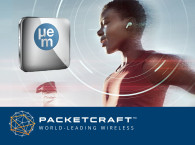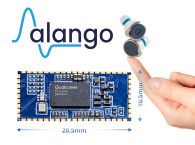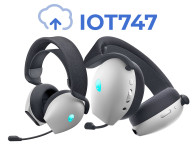
Electronic shelf labels (ESL) are small, battery-powered electronic paper (e-paper) displays that present product and pricing information at the shelf edge, replacing paper labels. ESLs typially use IoT wireless technologies to communicate with a central hub to form a dynamic pricing automation network. Normally this has been the domain for ZigBee, 6LoWPAN (Thread) and other IEEE 802.15.4 wireless protocols with mesh technologies. E-paper displays for shelf labels have also used RFID-enabled tags, which enable battery-less designs. More recent energy-harvesting and RF powered designs, such as those supporting the new AirFuel Alliance RF Wireless Power and Charging Standard, can support a very low power radio receiver.
ESL systems offer retailers the ability to automate pricing, establish more efficient in-store operations, and increase shopper satisfaction. The Bluetooth Special Interest Group (SIG), the trade association that oversees Bluetooth technology, believes that this can be a major expansion area for the technology and releases a new wireless standard for the electronic shelf label (ESL) market. A few semiconductor companies have encouraged the Bluetooth SIG to create an ultra-low power, highly secure ESL wireless standard based on Bluetooth technology.
"Interoperability and standardization are in the DNA of Bluetooth technology," says Mark Powell, CEO of the Bluetooth SIG. "Our members have a long, rich history of developing standards that enable market expansion and mass adoption of new product categories. The introduction of a wireless standard for the electronic shelf label (ESL) market will unlock the next phase in retail digital transformation to deliver better outcomes for both stores and shoppers."
"Retailers are increasingly looking towards Internet of Things (IoT) technologies to help them deliver operational efficiencies, increase conversion, and to encourage customers to return to stores," says Andrew Zignani, Research Director at ABI Research. "However, some retailers have been hesitant to adopt ESL technologies due to concerns over vendor lock-in, interoperability, scalability, and the ability to extend this to other smart retail initiatives. The introduction of the Bluetooth ESL standard will help reduce potential obstacles for retailers looking to invest in IoT technologies and accelerate adoption and innovation."
"At SES-imagotag, we are committed to helping the global retail industry realize the full potential of stores through digitalization and electronic shelf labeling. The standardization of ESL connectivity represents an additional avenue towards achieving that goal," says Philipp Maurer, Vice Chair of the Bluetooth SIG ESL Working Group and VP of Engineering at SES-imagotag. "We are honored to have brought our expertise and taken a leadership role in building a global standard with the Bluetooth SIG. We are excited to expand our platform capabilities using Bluetooth technology, enabling us to provide an even broader portfolio of IoT solutions tailored to our customers’ unique needs."

Standardization at the shelf edge using Bluetooth technology also offers benefits to ESL developers, including economies of scale and better allocation of development resources.
"We are proud to have collaborated with the Bluetooth SIG and its members to lead the standardization of ESL connectivity. Backed by a proven product qualification program and an unmatched installed base, Bluetooth technology was the logical choice to build a frictionless, interoperable ESL ecosystem," adds Art Miller, VP, Business Development and Head of Retail, Qualcomm Technologies. "By adopting a standardized approach for wireless communications, ESL development complexity is greatly reduced, allowing development teams to turn their attention to more value-added, differentiating features and capabilities for their customers."
Bluetooth ESL products will leverage the new features in the Bluetooth Core Specification Version 5.4 as well as an upcoming Electronic Shelf Label Profile Specification that defines how to use these new features to create interoperable ESL systems.
www.bluetooth.com







